How To Check Your CPU Temperature in Windows 10/11
In today’s fast-paced technological world, it is essential to have a powerful and efficient computer. However, with great power comes great responsibility, and it is important to monitor your CPU temperature to ensure that it does not overheat. Overheating can cause your computer to crash, and in severe cases, it can cause permanent damage to your hardware.
Fortunately, checking your CPU temperature is not difficult, and there are several tools and methods available to do so. In this article, we will discuss how to monitor your CPU temperature in Windows 10/11 and the importance of keeping your hardware cool.
Why Is Monitoring CPU Temperature Important?
Your CPU is the brain of your computer, and it generates heat when it is running. If the heat is not dissipated effectively, it can cause your computer to slow down or even crash. Overheating can also damage your hardware, and in some cases, it can cause your CPU to fail permanently.
By monitoring your CPU temperature, you can identify potential issues before they become a problem. It also allows you to take preventive measures to keep your hardware cool, which can prolong its lifespan and ensure that your computer runs smoothly.
Monitoring your CPU temperature may also help manage fan noise, as some fans can become louder when the CPU temperature is higher. This happens as the cooling system tries to dissipate the extra heat to keep your hardware safe. Especially under a heavy workload, this noise becomes disruptive and can interfere with your daily activities.
The temperature of a processor can also influence its energy consumption due to the increased resistance of transistors at higher temperatures. Higher temperatures may also require the processor to reduce its clock speed or voltage to avoid overheating, leading to reduced performance and slower processing speeds.
How To Check and Monitor CPU Temperature in Windows 10/11
There are several methods to check and monitor your CPU temperature in Windows 10/11. Here are some of the most common ways:
Here are some of the most common ways:
BIOS Settings
Your computer’s BIOS (Basic Input/Output System) contains settings that control the hardware, including the CPU. You can access the BIOS settings by restarting your computer and pressing the appropriate key (usually F2 or Del) during the boot process.
Once you are in the BIOS settings, look for a section called «PC Health Status» or «Hardware Monitor.» This section will display your CPU temperature, among other hardware information.
Note that depending on your BIOS, these instructions may vary greatly. We recommend checking your motherboard manufacturer’s website or reading the manual for specific instructions on how to check and monitor your CPU temperature.
Third-Party Applications
Keeping an eye on your computer’s CPU temperature while using your computer is important in ensuring that your system is running optimally. There are third-party applications available that make monitoring your CPU temperature easy. Popular options such as CPU-Z, Core Temp, and HWMonitor track your processor temp and offer more detailed analytics than Windows’ built-in tools.
There are third-party applications available that make monitoring your CPU temperature easy. Popular options such as CPU-Z, Core Temp, and HWMonitor track your processor temp and offer more detailed analytics than Windows’ built-in tools.
With the help of these applications, you can monitor individual core temperatures and fan speeds for potentially long-term insights into exactly how well your computer’s internal components are working.
Most third-party apps have a setting to launch on startup, allowing you to keep track of your system’s health from the moment you turn it on.
Here is a step-by-step guide on how to check CPU temperature on Windows 10/11 using third-party software:
- Download and install a third-party CPU temperature monitoring software, such as HWMonitor, Core Temp, or CPU-Z.
- Once installed, open the software.
- You should see a list of temperature readings for various components of your computer, including your CPU.
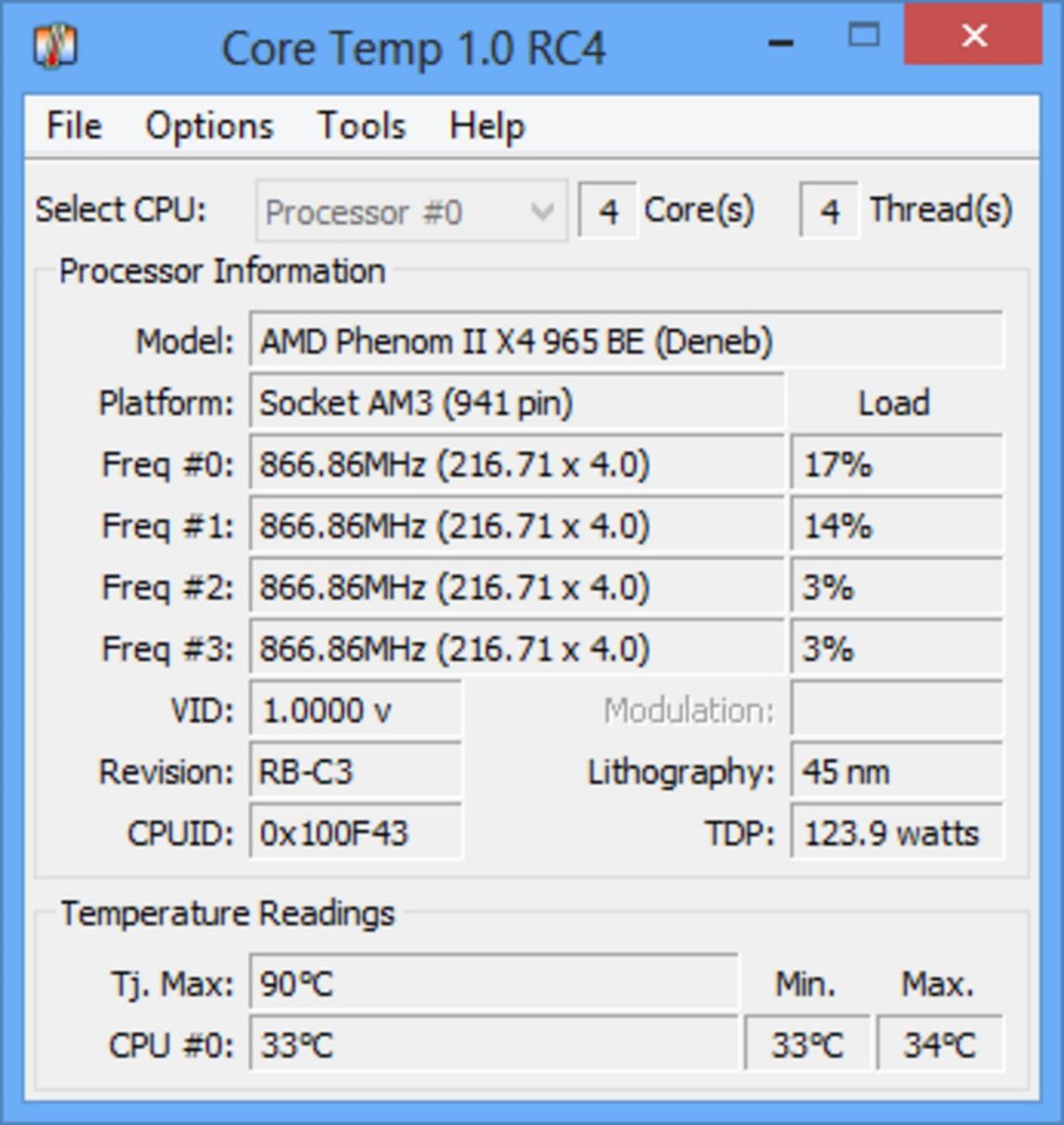
- Look for the temperature reading for your CPU, which should be labeled as «Core Temperature» or something similar.
- The temperature reading may be displayed in Celsius or Fahrenheit. If you prefer a different unit, look for an option to change the unit of measurement.
- You can also monitor other information about your CPU, such as clock speed and usage.
That’s it! With a third-party CPU temperature monitoring software, you can easily monitor the temperature of your CPU to ensure that it does not overheat and to keep your computer running smoothly.
Can I check CPU Temperature with Windows 10/11 Task Manager?
Unfortunately, the Task Manager in Windows 10/11 does not show your CPU temperature. However, it can provide useful information about your processor’s performance and utilization. You can use this to determine if the cooling system is working properly and if your processor is being taxed too much.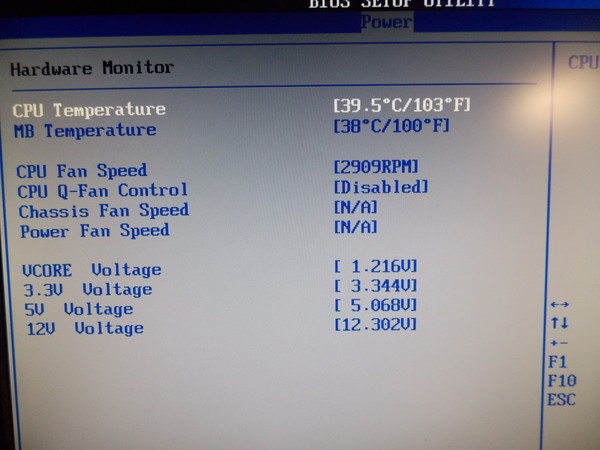
To access the Task Manager, press Ctrl+Shift+Esc or right-click on the taskbar and select «Task Manager.» Here you can check CPU usage and other hardware information, such as memory utilization and disk usage.
How to Prevent CPU Overheating
Preventing overheating is essential to keeping your computer running smoothly. If you notice that your CPU is struggling to keep its temperature under control, here are some steps you can take to help cool it down:
- Keep your computer clean — Clean the interior of your computer regularly to remove dust and debris from its fans and vents. Dust buildup can block airflow, resulting in an increase in temperature due to a lack of adequate cooling.
- Improve airflow — Good airflow is essential for keeping your hardware cool. Ensure that your computer has adequate ventilation, and avoid blocking the air vents.
- Use a cooling pad — If you use a laptop, consider using a cooling pad to improve airflow and keep your computer cool.

- Check your thermal paste — Thermal paste is a material that is applied between your CPU and heatsink to improve heat transfer. Over time, the thermal paste can dry out or degrade, reducing its effectiveness. Check your thermal paste periodically and replace it if necessary.
After going through these steps, your CPU should be running cooler and more efficiently.
What To Do If Your CPU Is Running Too Hot
If you find that your CPU is running too hot, it could indicate a hardware issue or due to inadequate ventilation inside the case. In such cases, we recommend going through the following troubleshooting steps:
1. Close Unnecessary Programs
Running too many programs at once can put a strain on your CPU and cause it to overheat. Close any unnecessary programs and see if this reduces your CPU temperature.
2. Adjust Your Power Settings
Your computer’s power settings can also affect performance and temperature. Try switching to a power setting that is optimized for performance, such as «High Performance» or «Maximum Performance.»
Try switching to a power setting that is optimized for performance, such as «High Performance» or «Maximum Performance.»
3. Check Your Case Fans
Make sure all of the fans in your computer are working properly and not blocked by dust or debris. If necessary, you can clean them with compressed
4. Replace or Upgrade Your Cooling System
If your CPU is still running too hot, it may be time to consider upgrading or replacing your cooling system. Consider investing in a better fan or liquid cooling system if you’re serious about keeping your hardware cool.
By following these steps, you can help ensure that your CPU is running at a safe temperature and avoid any potential damage to your hardware. Monitoring your CPU temperature is an important part of keeping your computer running efficiently, so make sure to keep it in check!
FAQ
What is a safe CPU temperature range?
A safe CPU temperature range is typically between 45-100°C (113-212°F). Overheating beyond 100°C (212°F) can lead to shutdowns and permanent damage, while temperatures below 45°C (113°F) can cause performance issues or freezing.
Overheating beyond 100°C (212°F) can lead to shutdowns and permanent damage, while temperatures below 45°C (113°F) can cause performance issues or freezing.
What are some common signs of an overheating CPU?
The most common indications that you’ve got an overheating CPU are things like unexpected system shutdowns or slowdowns, abnormal noises coming from your hardware (like rattling fans), and/or an increase in temperature if you place your hand near the fan exhaust.
What should I do if my CPU starts to overheat?
If your CPU is starting to overheat, then you should act quickly to resolve the issue before any permanent damage occurs. Here are some steps you can take:
- Check the airflow inside your computer case
- Clean out dust and dirt build-up in your PC
- Turn off unnecessary applications
- Change thermal paste for processors with stock coolers
Conclusion
The bottom line is that monitoring your CPU temperature is essential to keeping your computer running optimally. If overheating occurs, make sure to check your thermal paste and take steps such as closing unnecessary programs to reduce the strain on your CPU. Finally, if you find that your processor is still running too hot, consider upgrading or replacing its cooling system.
If overheating occurs, make sure to check your thermal paste and take steps such as closing unnecessary programs to reduce the strain on your CPU. Finally, if you find that your processor is still running too hot, consider upgrading or replacing its cooling system.
By taking these measures, you can ensure that your hardware remains safe and functioning properly. We hope that this article has been helpful in providing you with the information needed to monitor your CPU temperature and take steps to prevent overheating.
Keeping your hardware cool is essential for ensuring optimal performance, so make sure to keep an eye on those temperatures!
One More Thing
We’re glad you’ve read this article. 🙂 Thank you for reading.
If you have a second, please share this article on your socials; someone else may benefit too.
Subscribe to our newsletter and be the first to read our future articles, reviews, and blog post right from your inbox. We also offer deals, promotions, and updates on our products and share them via email. You won’t miss one.
You won’t miss one.
Related Articles
» How to Fix High CPU Usage on Windows 10
» Fixed: SysMain High CPU and Memory Usage in Windows 10
» How to Fix Discord High CPU Usage on Windows 10/11
How to Check CPU Temp & Prevent PC Damage
Have you ever been watching a YouTube video, searching the web, answering emails and more, all at the same time on the same device? If so, you may have noticed your device becoming hot to the touch or the fan running at increasingly high speeds. This is because the Central Processing Unit (CPU) is overheating.
While most premium protection services or VPNs won’t cause overheating, it’s possible for a lack of ventilation, dust, malfunctioning parts or background applications to be the culprit. If left untreated, high CPU temps can damage or destroy devices.
Read our guide to learn more about how to check CPU temp, why your CPU may be overheating and how to prevent this.
What is CPU Temp?
CPU temp is the temperature of a technological device’s central processing unit. These processors are arguably the most important parts of any device because they process requests and information so the device works properly.
These processors are arguably the most important parts of any device because they process requests and information so the device works properly.
CPU temps can run high if the processor is being used over a long period of time or for multiple high-maintenance tasks. If a CPU’s temperature is too high for too long, the processor can overheat which could lead to slower processing or system failure. It is important to be aware of the CPU temp in order to keep a computer running at its best.
How to Check CPU Temp on Windows 10 and Windows 11
Unfortunately, there is no easy way to check CPU temp on a Windows system, so manual checks are the only way for Windows 10 and Windows 11 users to see and monitor the temperatures of their systems.
Use BIOS/UEFI to Check CPU Temp
Unfortunately, there is no easy way to check the CPU temperature on a Windows system. To manually check your CPU temperature, you will need to use the basic input-output system (BIOS) or Unified Extensible Firmware Interface (UEFI) software.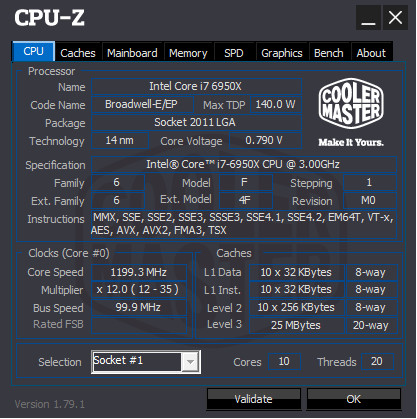 These software systems make sure a device’s hardware runs properly.
These software systems make sure a device’s hardware runs properly.
By rebooting your computer, you can check your CPU temp using the BIOS/UEFI software. As your computer restarts, it will give you a designated key — typically F12, F2, ESC or DEL — to access your processor settings.
Step 1: Navigate to the taskbar and select Settings.
Step 2: Choose Update & Security.
Step 3: On the side panel, select Recovery.
Step 4: Go to Advanced startup and hit Restart now.
Step 5: On the reboot screen, choose Troubleshoot.
Step 6: Hit Advanced options.
Step 7: Click UEFI Firmware Settings. If your system uses BIOS, you will skip this step.
Step 8: Confirm by clicking Restart.
After restarting your system, you will be taken to a screen where your CPU temperature is available. This will be a static temperature, but it should give you an idea of the health of your computer.
This will be a static temperature, but it should give you an idea of the health of your computer.
Checking CPU Temp With Core Temp
Outside of manual checks, it’s possible to check CPU temp with apps on both Windows and Mac devices. The Core Temp app is one of the most accessible app options that allows you to monitor the temperature of all your computer’s processors.
After you have downloaded and installed the Core Temp app, follow these steps to check your CPU temperature:
Step 1: Open the application.
Step 2: Locate the temperatures of your processors at the bottom of the widget under Temperature Readings. The Max column will show you the highest recorded CPU temps.
Step 3: Quickly access core temps by selecting “show hidden icons” at the bottom of your taskbar.
If you are looking for additional ways to check CPU temp for macOS, the Fanny Widget allows you to monitor your fans and CPU temp right from your menu bar and SpeedFan allows you to manually control the speeds of your fans.
6 Additional CPU Temp Checking and Monitoring Softwares
Aside from Core Temp, there are a variety of different apps that allow you to check and monitor your CPU temps. Some apps are designed for specific device users — like gamers or white hat hackers — but these six apps all offer CPU temperature checks and monitoring.
- HWMonitor: With both free and paid options, HWMonitor is a hardware monitoring system that checks and monitors temperature and other computer health sensors.
- NZXT Cam: As a free download with a mobile app for monitoring, NZXT Cam is popular with gamers because it is easy to use and can monitor CPU temps during gameplay.
- HWInfo: Popular with major organizations like NASA, HWInfo is an easy-to-use, free software system that monitors all technical aspects of a technological device.
- Open Hardware Monitor: Designed with temperature in mind, Open Hardware Monitor is open-source software that can monitor CPU temp, fan speed and more.

- Ryzen Master: Built specifically for AMD Ryzen processors, Ryzen Master offers insight into and manual control over CPU temperature, overclocking and more.
- Speccy (???): Along with PC specs, Speccy allows users an in-depth look into the CPU processor, motherboard and more.
Why Should You Check CPU Temp?
The CPU is responsible for completing the instructions received from the hardware and software. When it overheats, your device could be damaged or destroyed. It’s good practice to periodically check your CPU temp to ensure you aren’t inflicting any unnecessary harm on your device. Monitoring these temperatures can also alert you to other possible problems, like viruses or malicious malware.
Causes of High CPU Temps
If your device is healthy, it shouldn’t overheat randomly. High CPU temps are often caused by some other issue — like having too many programs running or a virus infection. Some of the more frequent causes of an overheated CPU include overclocking, thin computers, old computers, system freezes and slow PCs.
Some of the more frequent causes of an overheated CPU include overclocking, thin computers, old computers, system freezes and slow PCs.
Overclocking
Your CPU may be overheating because you’re overclocking your CPU. When you overclock a computer, you modify your processor to perform faster than it was originally made for. This can cause your CPU’s temp to increase because it is being forced to work harder than the manufacturer intended.
Thin Computer
If you own a thin computer, then you might notice it gets hot faster than other computers. Many thin computers don’t have enough space to allow for proper cooling technology, including fans. Because thin computers still have the same powerful processors as their predecessors, they can overheat quickly without the proper cooling mechanisms. Owners of these thin computers usually need to buy exterior accessories to cool their computers.
Old Computer
After using your device for many years, there may be dust buildup that stops the fans from cooling the CPU.:max_bytes(150000):strip_icc()/how-to-check-macbook-temperature-51841462-c1a91325952341359ec6f50fbb9d3af6.jpg) Disinfecting your computer or replacing its fans can help extend its life. Additionally, antivirus software can protect older computers from dangerous malware or viruses that they are more vulnerable to.
Disinfecting your computer or replacing its fans can help extend its life. Additionally, antivirus software can protect older computers from dangerous malware or viruses that they are more vulnerable to.
System Freezes
Sometimes a crash or shutdown has nothing to do with your software or hardware, but it is actually the computer trying to protect itself from long-term damage caused by consistent overheating. To lower this risk, you can free up RAM space by deleting old files and removing unnecessary programs.
Slow PC
Older computers or those that lack storage space may be forced to run at slower speeds. This can put a strain on your CPU and cause it to overheat. Making your computer faster by tending to hardware or software issues could help keep your CPU temps lower.
What’s the Best CPU Temp for Your Computer?
To keep your computer in the best possible shape, it is ideal that you keep your temps under 60°C. Your computer should be able to perform its best without inflicting damage to your computer if its CPU temps stay around this number.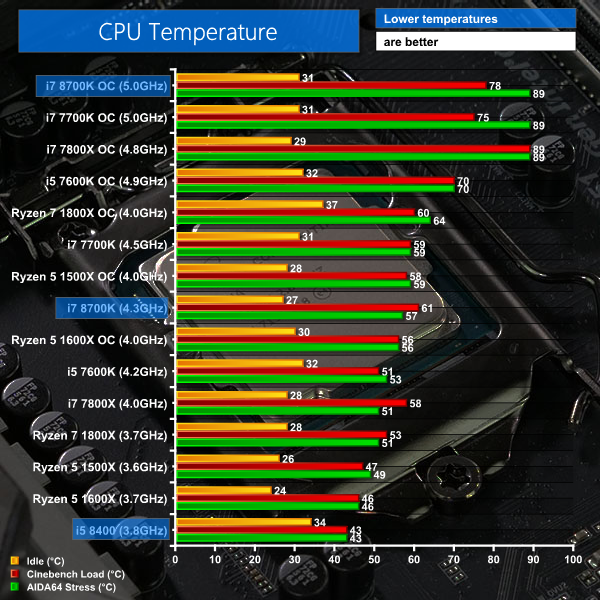 For gamers or systems running intense programs, normal CPU temperatures can be between 70 and 80°C.
For gamers or systems running intense programs, normal CPU temperatures can be between 70 and 80°C.
It’s important that your processor is not reaching temperatures over 90°C. These temperatures can cause serious damage to your computer, especially if they occur regularly and over long periods of time. If your CPU temperature is consistently high, you may need to replace your device’s fans and revert any overclocking adjustments.
7 Tips for Keeping Your CPU Temp Down
Keeping your computer free from any internal harm and external damage is the best formula for a long-lasting device. Try some of these tips and techniques to keep all of your parts in top shape:
1. Clean Your PC
There are a few ways to keep the inside and outside of your computer clean. You can use a dust rag and a disposable compressed air duster to clean debris from the interior and exterior. You can also open the casing to carefully vacuum around the fans and other hardware components.
2. Replace Your Thermal Paste
There are times when an overheating issue can easily be solved by removing the old layer of thermal paste and adding a new one. Thermal paste is what transfers the heat from your CPU to the cooler, and when it dries up your CPU temp can increase. Most thermal pastes will need to be replaced after three years.
3. Purchase a New CPU Cooler
If you are still having trouble cooling down your computer, it might be time for some new fans with a new cooler. Many pre-installed CPU coolers are not able to handle a device’s consistent use, so replacing them can help stop your device from overheating. You can also easily install a water-cooling solution in addition to your fans, or even in place of them.
4. Use a Laptop Stand
An effective way to increase airflow and protect your device is to use a laptop stand. Laptop stands hold your computer at the optimal angle for staying cool. Plus, these hard, flat surfaces allow for air circulation and limit heat build-up.
5.
Install Antivirus Software
Without antivirus software, your device is vulnerable to malware. Aside from accessing your personal information, destroying files, or filling your device with spam, malware can overrun your CPU and cause it to overheat. Protecting your devices by downloading antivirus software is the best way to keep your personal information secure.
6. Close Background Applications and Programs
Background applications and programs can be a drain on your computer’s processing power. If you aren’t using a certain application or program, shut it down or install software to put idling programs to sleep. This will allow your processor to focus on the application or program you need to use and lower your CPU temps.
7. Maintain a Cool Environment
Your device is more likely to overheat if your physical environment is too warm. Keeping your PC out of direct sunlight is an easy way to regulate your CPU temp. Additionally, a cool environment will allow your processors to run their best.
If you have a computer that is constantly overheating, it might be time to perform some of these basic checks. Consistently monitoring CPU temps can prevent early retirement of your computer. Unfortunately, if you cannot seem to lower your CPU temp, then it might be time to invest in premium protection services, new parts or even a new computer.
Sources: Chron | Howtogeek | Computerhope | Hardwaresecret | IONOS
Panda Security specializes in the development of endpoint security products and is part of the WatchGuard portfolio of IT security solutions. Initially focused on the development of antivirus software, the company has since expanded its line of business to advanced cyber-security services with technology for preventing cyber-crime.
How to find out the temperature of the processor and get rid of overheating?
How to check the CPU temperature in Windows 7/10/11 and cool down the CPU? Programs for testing and monitoring the operation of the processor will help.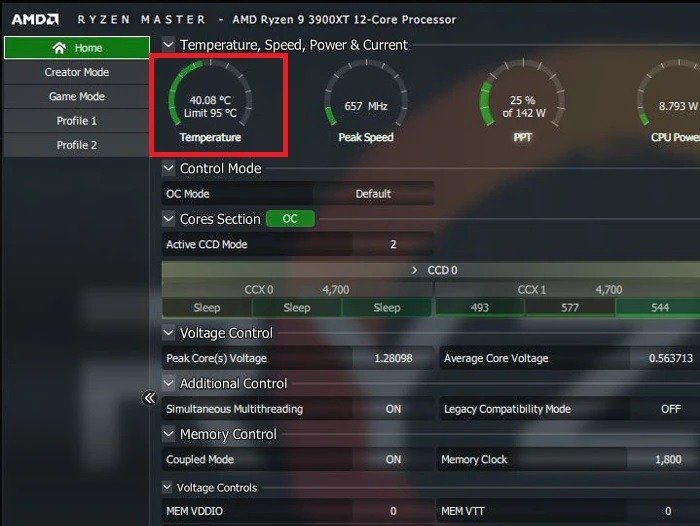
If your cooling fan is making a loud noise and your power consumption is skyrocketing, your PC’s processor is probably overheating. This problem can lead to random system reboots and serious damage, after which you will have to replace both the processor and the computer’s cooler.
- What should be the normal CPU temperature?
- How to view the processor temperature through the Aida64 program?
- How to check CPU usage?
- What to do if the processor is overheating?
What should be the normal temperature of the processor
Windows processor temperature can be found in the BIOS or using the SpeedFan, AIDA64, CAM, Speccy utilities. The following temperatures are considered acceptable for CPUs:
- Under low load, the CPU temperature should be between 30 and 50°C.
- Under heavy loads, such as running computationally intensive programs, the temperature may rise up to 95°C. Such high values, however, are not very helpful to the CPU.

- In any case, the maximum temperature that your PC processor can reach must be below 100°C.
How to view the temperature of the processor through the program Aida64
As an example, let’s show you how to check the temperature of your PC’s processor in the popular program Aida64. This is more convenient and sometimes faster than figuring out the BIOS settings, and gives a fairly accurate result.
You can download the application on the official website of the developer — a trial version of Aida64 is available for free.
- Install the program following the prompts on the screen.
- Select Computer from the sidebar.
- Find «Sensors» among the subsections.
- The Temperatures section will list the values for your PC components. The temperature of the processor components will be indicated in the stores with the abbreviation of the CPU.
As you can see in the screenshot, the CPU temperature of our computer is within normal limits.
By the way, using Aida64 it is easy to see the temperature of the processor (as well as the GPU of the video card) in Windows 10/7/XP, as well as on Mac OS X and Android. In Linux, this can be done through the lm_sensors console program or the PSENSOR application.
How to check the processor load
It is normal for the processor to have high temperatures under heavy load. To find out how heavily loaded your CPU is, just refer to the task manager.
CPU Usage in Task Manager
Use the key combination [Ctrl] + [Shift] + [Esc] to open Task Manager and click on the «Performance» tab. You can also get into the task manager through the command line: for this you need to set the value «cmd» in the search menu «Start», and in the program that opens, enter the command «taskmgr» without quotes.
In the upper left part of the new window, you will see the current CPU usage. The graph at the top right shows the history of CPU usage over the last 60 seconds.
If the heavy load lasts for at least one minute and the processor temperature is above 60°C, this is normal.
What to do if the CPU overheats?
If your processor has become too hot, the following steps will help reduce its temperature:
CPU Stability Test
Using the free utility SpeedFan, you can speed up the rotation of the CPU fan to lower the CPU temperature.
Check the CPU for errors using the CPU Stability Test program. This way you can find out if the high operating temperature of the processor is the result of some other problem.
- To get rid of the accumulated hot air, open the computer case. But this is only a temporary solution, because in this case, all PC components will not be protected from dust.
- If you have already removed the cover of your desktop PC, but the processor is still hot as hell, try to remove hot air with a fan or vacuum cleaner.
- If your computer only has a passive cooling system, installing an active fan will help keep the temperature down.
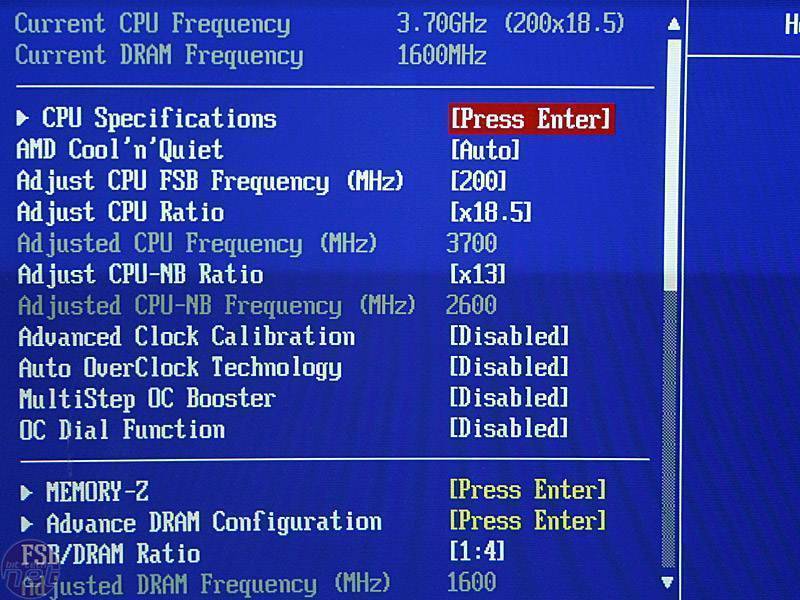
By the way, the maximum cooling of PC components is provided by water cooling systems.
- If you are constantly using software that is too processor intensive, replace the CPU with a more powerful one.
See also:
- How to properly apply thermal paste on the processor?
- What is an operating system kernel?
Photo: development companies
How to find out the processor temperature — Hi-Tech Mail.ru
Processor temperature is a parameter that affects the stable operation of the entire system, and its overheating can negatively affect not only comfort while using the computer, but also lead to serious damage.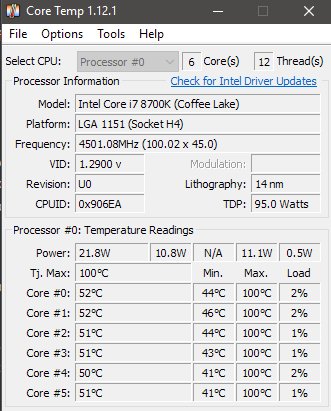 In this article, we will share with you some simple ways to find out the temperature of the processor on your computer.
In this article, we will share with you some simple ways to find out the temperature of the processor on your computer.
Of course, it makes no sense to check the processor temperature when the computer is fully functional and does not cause problems for the user. First of all, CPU temperature control may be necessary when the computer is accompanied by various failures, system freezes or increased noise of the cooling system.
In addition, it will be useful to check the temperature after procedures such as replacing thermal paste or cleaning the cooling system from dust, as well as after replacing some components or overclocking the processor.
You can view the temperature of the Windows 10 processor, as in most other operating systems, without resorting to third-party programs. The quickest and easiest way to do this is by using the command line or the built-in PowerShell tool. This method in just a few seconds allows you to find out the temperature of the processor in any operating mode.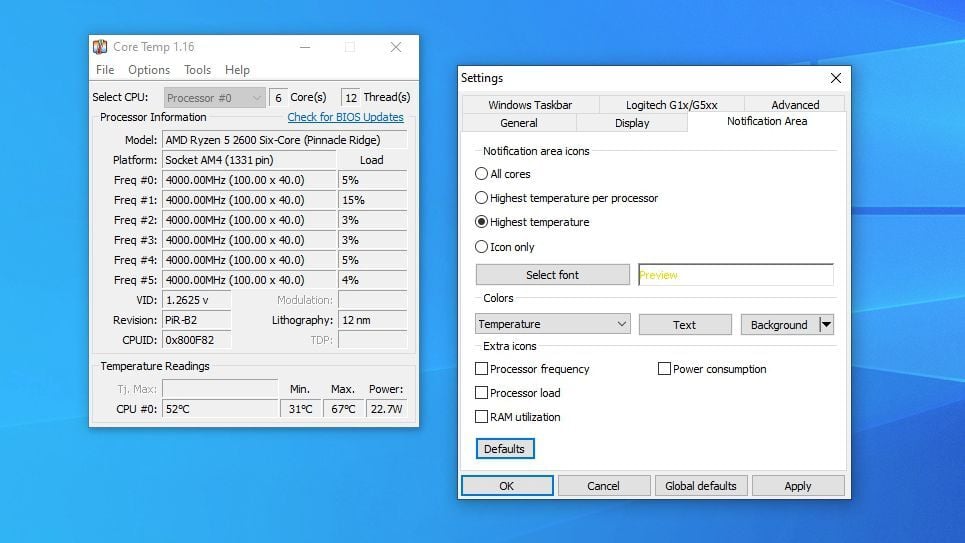
However, before you can view the processor temperature using the command line or PowerShell, remember that these tools must be run only as an administrator, otherwise the method will not work.
How to find out the temperature of the processor using the command line
or call the system menu «Run» (the fastest way to do this is using the keyboard shortcut WIN + R ) and enter the command to call the Command Prompt «cmd» in its field, then press the keyboard shortcut CTRL + SHIFT + ENTER
After opening the command line in the field after the blinking cursor, enter the value:
wmic /namespace:\\root\wmi PATH MSAcpi_ThermalZoneTemperature get CurrentTemperature and press Enter
You will see the requested parameter with the current temperature of your CPU. Do not be afraid of four-digit numbers. The temperature data here are indicated in Kelvin and multiplied by 10. This is due to the fact that it is more convenient for sensors to work with information with integers
To find out the exact data and convert the indicator to Celsius temperature, you must first divide it by 10, and then subtract the value of 272. 15. Using the example from the screen above, it will look like this:
15. Using the example from the screen above, it will look like this:
(3462/10) — 272.15 = 74
2 One more fast The way to find out the temperature of the processor is to use the built-in PowerShell shell. This Windows tool is very similar to the command line, but allows you to perform more complex tasks and scripts. Of course, it is far from the Linux terminal, but compared to CMD, it is a much more advanced tool. However, both of these shells are equally well suited for our task.0003
So, to call PowerShell, find this tool in the Start menu and run it as an administrator.
Next to the blinking cursor, enter the command:
get-wmiobject msacpi_thermalzonetemperature -namespace “root/wmi” and press Enter . After executing the command, find the CurrentTemperature parameter and convert its value to Celsius temperature, similar to the formula we gave above for the command line.
How to check CPU temperature using Bios or UEFI
Before checking the processor temperature using the BIOS, you should remember that this method has a significant drawback. Firstly, you will not be able to find out how the temperature changes in different operating modes of the computer, and secondly, while the BIOS is running, the computer runs almost without load
Firstly, you will not be able to find out how the temperature changes in different operating modes of the computer, and secondly, while the BIOS is running, the computer runs almost without load
Depending on the configuration of your computer, you can view the processor temperature in the BIOS or UEFI . To enter the BIOS, you need to restart the computer and during the system restart, press one of the keys: Esc, F2, F8, Delete. Depending on the BIOS version, information about the processor temperature can be located in the following sections:
- PS Health Status
- Monitor
- Hardware Monitor
- Power
The processor temperature will be displayed on the next menu screen.
How to check the temperature of the processor using third-party programs
In addition to standard tools, there are many third-party programs for monitoring the temperature of computer components.
AIDA 64
A utility with a simple interface for testing and identifying computer components — a direct successor to the equally popular Everest program.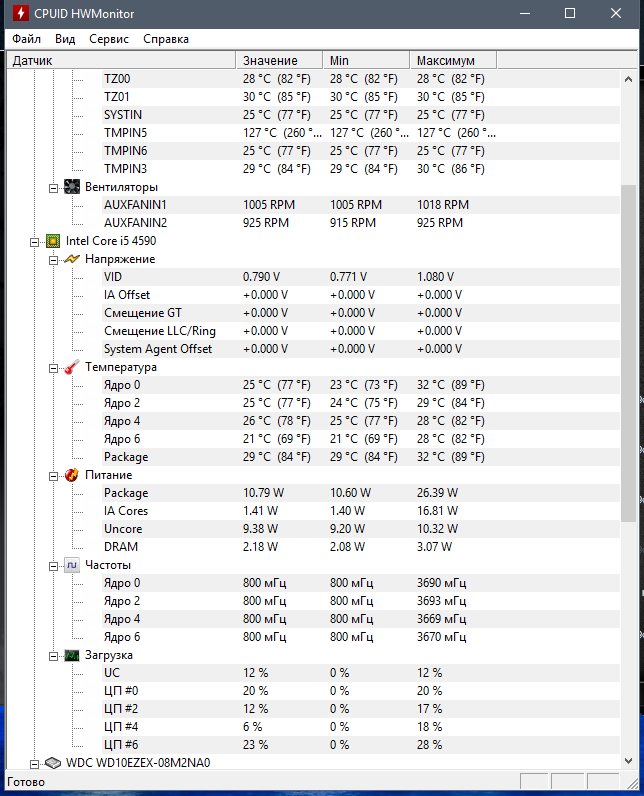
In order to find out the temperature of your processor, install the program from the official website of the developer (trial version for 30 days) and run it on your computer.
After opening the program in the side menu, we find the item «Computer» → «Sensors», where the desired parameter will be located.
Core Temp
Core Temp is a small utility specially designed to get CPU temperature information that allows you to see temperature fluctuations in real time under various workloads. You can download the PC version for free on the official website of the developer.
In addition, the program also has a mobile version in the form of an Android application, which will allow you to find out the temperature of the processor on your smartphone.
CPUID HWMonitor
Another program for monitoring all major computer components. In addition to the processor temperature that interests us, the program can also read parameters such as fan speed, voltage, temperature of hard drives and video cards, as well as other elements of the motherboard. In addition, the program allows you to save all values as a separate text file, which allows you to monitor the performance of sensors in dynamics.
In addition, the program allows you to save all values as a separate text file, which allows you to monitor the performance of sensors in dynamics.
Another worthy feature of the utility is monitoring battery parameters, which will undoubtedly come in handy for laptop users. The program allows you to track the voltage, current and full capacity of the battery, as well as the charge level as a percentage of the maximum.
Conclusion
Undoubtedly, each of these verification methods deserves attention and can be used by you depending on the circumstances and personal preferences. However, remember that the temperature value alone will not give you anything. Therefore, before you find out the temperature of the processor, also do not be too lazy to find out what temperature is normal specifically for your CPU model.
This is also interesting:
Photo: Depositphotos
Author: Anton Sokolov 0003 Follow us
News Hi- TechMail.
